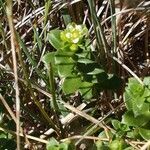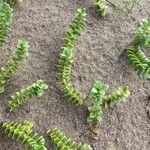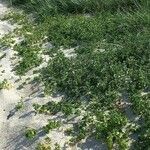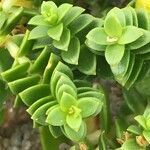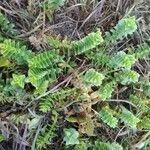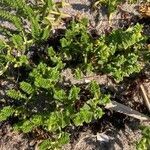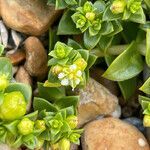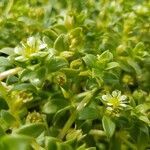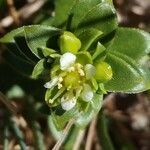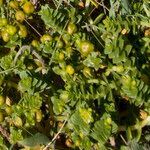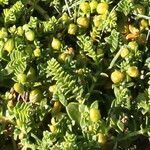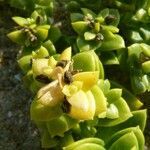Colonial by rhizomes and runners, forming dense colonies often 1–2 m wide; stems 1–5 dm, simple to much-branched; lvs 1–2 cm, elliptic or elliptic-ovate to obovate or sometimes lanceolate or oblanceolate; sep ovate or lance-ovate, 3–7 mm; pet in male fls ca equaling the sep, in female fls rarely over 2 mm; stamens in male fls about equaling the pet, in female fls reduced or abortive; fr depressed, 4–8 mm long, 5–12 mm thick; seeds 3–5 mm, reddish-brown; 2n=48–70. Sea-beaches and sand-dunes; circumboreal, s. on the Atlantic coast to Va. June–July. Our plants are var. robusta (Fernald) House, with little-branched, few-fld stems 2–5 dm, the sep 4–5 mm. (Arenaria p.)
A herb that lies along the ground. It keeps growing from year to year. It is 10-15 cm tall. It forms large mats. The leaves are succulent and pointed. They occur one after another (alternate) along the stem. They are 1-4 cm long by 3-20 mm wide. The flowers have a strong honey scent. The flowers are star shaped with 5 white petals. They are in the axils of leaves near the tip of the stems. The fruit is a fleshy capsule. It is round and green and turns yellowish-brown when ripe.
